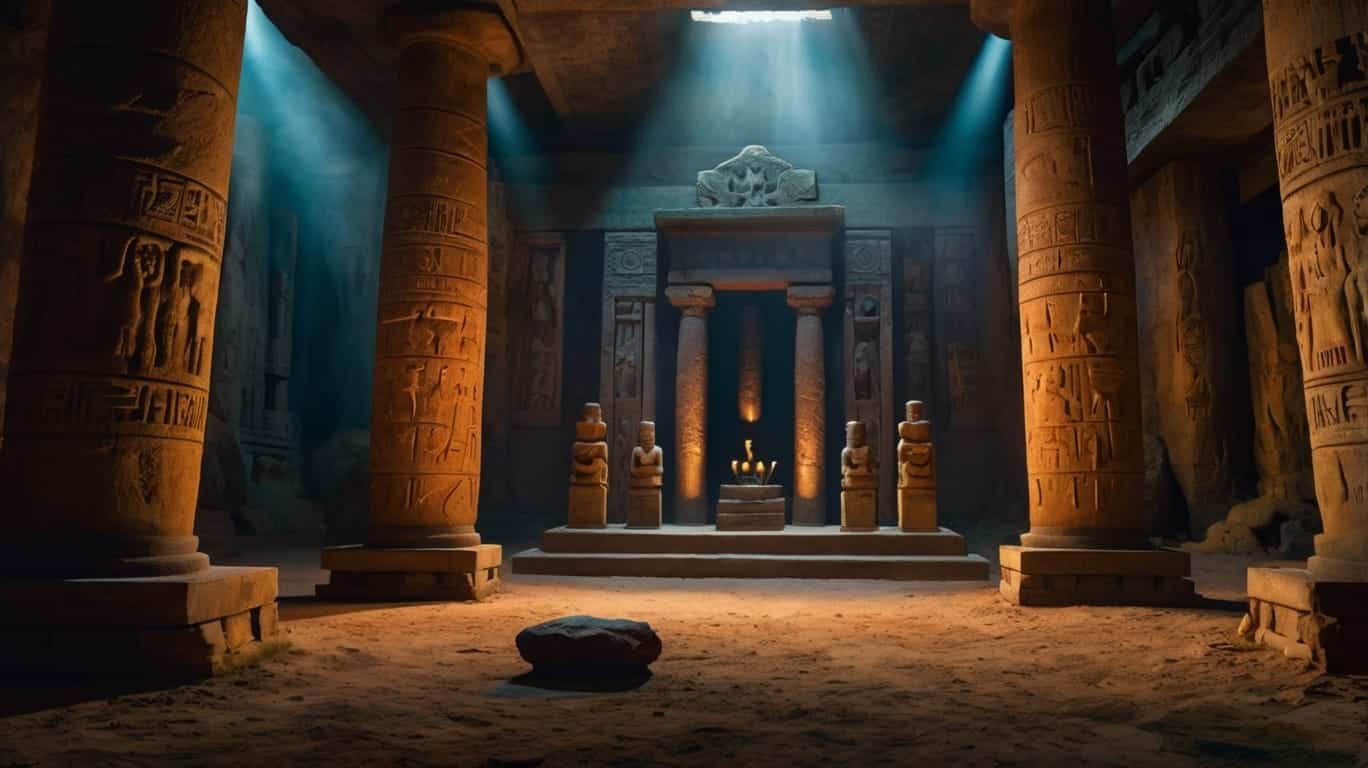They Found a Lost City Beneath the Pyramids… And It Changes Everything We Know About History
🌍 Table of Contents
- Introduction: Lost City Beneath the Pyramids
- The Shocking Discovery Beneath the Sand
- Exploring the Underground Labyrinth
- Theories That Could Rewrite History
- Why This Changes Everything
- Image Prompts for Leonardo AI
- SEO Meta Description and Tags

🏛️ Introduction: A Hidden City Awakes
For generations, the Great Pyramids of Giza have captivated the world. But what if the most astonishing part of Egypt’s ancient legacy wasn’t above the sand, but hidden beneath it? In 2024, a team of archaeologists made a discovery that could change everything: they found a lost city beneath the pyramids.
What they uncovered was not just a few chambers or tunnels, but the remains of a vast, organized, and ancient underground settlement that had been buried for thousands of years.

⛺️ The Shocking Discovery Beneath the Sand
Using ground-penetrating radar near the Pyramid of Khafre, researchers detected anomalies far below the surface. As they dug deeper, they discovered stone walls, staircases, and rooms that formed part of a once-thriving city.
This wasn’t just a tomb or a storage area — it was an entire hidden city, with signs of daily life, ceremonial practices, and possibly even a forgotten language. The layout included:
- Residential buildings and sleeping chambers
- Underground corridors
- A massive central hall or temple
- Strange symbols and unknown carvings
This discovery stunned even seasoned Egyptologists.

🏠 Exploring the Underground Labyrinth
The underground city appears to span several kilometers. Initial exploration has uncovered structures that suggest:
- Advanced architectural design far ahead of its time
- Storage rooms and granaries to support large populations
- Sacred spaces hinting at religious or ritual use
What’s even more puzzling are the symbols found on the walls — they don’t match typical hieroglyphics. Could this be a pre-dynastic civilization lost to history?

🧠 Theories That Could Rewrite History
Historians and archaeologists are now debating the origin and purpose of this lost city. Three leading theories have emerged:
- A Workers’ City: Built to house the thousands who constructed the pyramids.
- A Sacred Necropolis: Reserved for high priests and elites.
- 🌍 Table of Contents
- Introduction: A Hidden City Awakes
- The Shocking Discovery Beneath the Sand
- Exploring the Underground Labyrinth
- Theories That Could Rewrite History
- Why This Changes Everything
- Image Prompts for Leonardo AI
- SEO Meta Description and Tags
- Residential buildings and sleeping chambers
- Underground corridors
- A massive central hall or temple
- Strange symbols and unknown carvings This discovery stunned even seasoned Egyptologists.
- Advanced architectural design far ahead of its time
- Storage rooms and granaries to support large populations
- Sacred spaces hinting at religious or ritual use What’s even more puzzling are the symbols found on the walls — they don’t match typical hieroglyphics. Could this be a pre-dynastic civilization lost to history?
- A Workers’ City: Built to house the thousands who constructed the pyramids.
- A Sacred Necropolis: Reserved for high priests and elites.
- A Lost Civilization: Older than the pharaohs, buried by a natural disaster or forgotten by time.
If the last theory is true, it may mean Egypt’s ancient history is even older and more complex than we ever imagined.

🌌 Why This Changes Everything
This isn’t just another archaeological find. This challenges the traditional timeline of Egyptian history. It shows us:
- Ancient Egyptians may have inherited knowledge from an even earlier civilization
- There is still much hidden under the sands of Egypt
- Our understanding of ancient architecture and society is incomplete
The lost city beneath the pyramids could be the key to unlocking a forgotten chapter of human history.
In 2024, a team of archaeologists made a discovery that could change everything: they found a lost city beneath the pyramids.
Click Below To Watch Full Story
https://www.youtube.com/@EchoesofAntiquity-egypt/videos
The Ancient Robots: Did Lost Civilizations Build Machines Before Modern Times?
What if ancient civilizations built Ancient Robots thousands of years before modern technology even existed? It sounds like science fiction—but ancient texts,…
Ancient Supercomputers? The Mysterious Devices That Shouldn’t Exist
Table of Contents Introduction: Ancient Tech Beyond Imagination What if we told you that some ancient civilizations may have created technology so…
The Ancient Sound Weapons: Did Lost Civilizations Master Sonic Warfare?
Introduction Ancient Sound Weapons What if ancient civilizations possessed weapons so advanced, they could shatter stone walls—or even minds—using nothing but sound?…
Ancient Engineering Marvels: 7 Epic Megastructures That Defined Civilization
Table of Contents Introduction Throughout history, civilizations have showcased their brilliance through awe-inspiring architectural and engineering feats. These Ancient Engineering Marvels continue…
7 Lost Ancient Cities That Hold Secrets of the Past
Table of Contents Introduction Throughout history, civilizations have risen and fallen, leaving behind whispers of their existence. Some cities, once thriving, mysteriously…
10 Greatest Leaders of the Ancient World and Their Legacies
The ancient world was shaped by extraordinary leaders whose visions and achievements left indelible marks on history. These leaders not only commanded…







